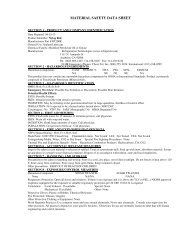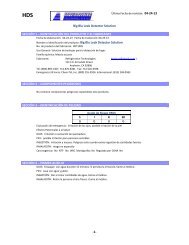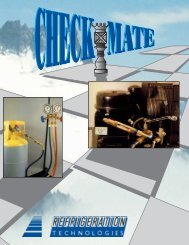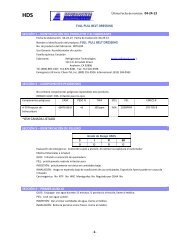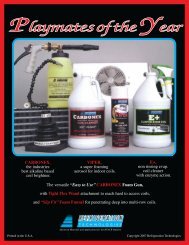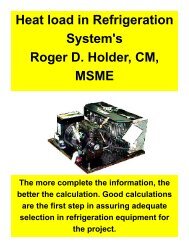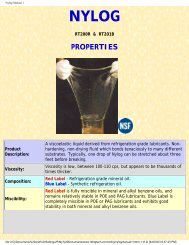Balancing of a Water and Air System (PDF
Balancing of a Water and Air System (PDF
Balancing of a Water and Air System (PDF
Create successful ePaper yourself
Turn your PDF publications into a flip-book with our unique Google optimized e-Paper software.
75<br />
All automatic control valves must be installed with the direction <strong>of</strong> flow opposing the<br />
closing action <strong>of</strong> the valve. In other words, the direction <strong>of</strong> flow must be such that the<br />
flow <strong>and</strong> pressure tend to hold the valve open. If the valve is installed the opposite<br />
way, it will produce chattering. Double-seated or balanced valves (Figure 11.23) are<br />
generally used when high differential pressures are encountered <strong>and</strong> tight shut<strong>of</strong>f is<br />
not required. The flow direction through these valves tends to close one port while<br />
opening the other port. This design creates a balanced thrust condition that lets the<br />
valve close smoothly, without water hammer, regardless <strong>of</strong> the differential pressure.<br />
Three-way Valves<br />
Three-way valves are generally classified as mixing or diverting. This refers to the<br />
internal construction <strong>of</strong> the valve, not the application. The internal differences are<br />
necessary so that the valve seats against flow. Mixing valves have two inlets <strong>and</strong> one<br />
outlet (Figure 11.24). Diverting valves have one inlet <strong>and</strong> two outlets (Figure 11.25).<br />
Either valve may perform a temperature-control action (mixing application) or a flowcontrol<br />
action (bypassing application) depending on its location in the system (Figure<br />
11.26). Diverting valves, however, should not be substituted for mixing valves <strong>and</strong><br />
vice-versa. Using either design for the wrong application would tend to cause chatter.<br />
Another type <strong>of</strong> three-way valve is used in the supply line to coils in a three-pipe<br />
system (Figure 11.27). This valve has two inlets <strong>and</strong> one outlet. One inlet is supplied<br />
with heating water <strong>and</strong> the other is supplied with chilled water. Depending on the<br />
thermostatic controls in the<br />
occupied space, the valve opens to allow either heating water or chilled water into the<br />
coil.<br />
75




